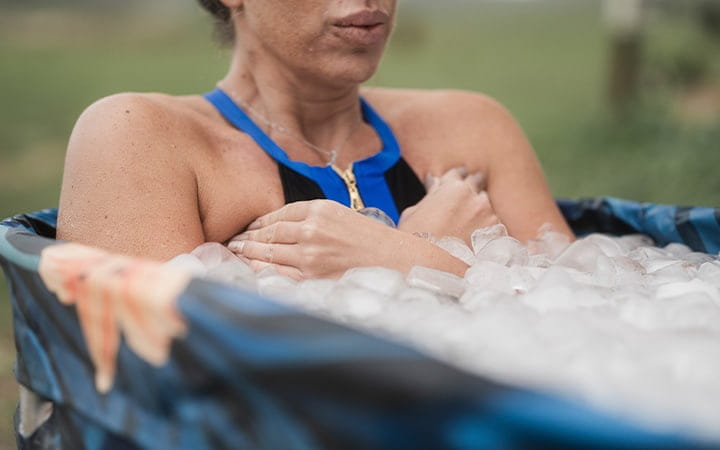Taking the Polar Plunge: What to Know About Cold Water Therapy
March 15, 2024

Cold water therapy – often done as polar plunges or ice baths at home – has been around for years as a recovery technique for elite athletes. Now the practice is gaining popularity among amateur athletes and non-athletes alike.
Proponents claim cold water therapy can help with everything from muscle soreness to boosting the immune system. But is it worth the hype? University Hospitals sports medicine physician Ben Boswell, DO, says that while further studies are needed to prove its effectiveness, cold water therapy is generally safe and has many potential benefits.
What Is Cold Water Therapy?
At its basic level, cold water therapy is any form of short exposure to extremely cold water. It can be as simple as a cold shower, or it can involve immersion into a tub of ice cold water or body of water, explains Dr. Boswell. A cold water or ice bath can last from just a few minutes to up to 15 minutes. Ideal temperatures for an ice bath are in the 50 – 59 degree Fahrenheit range, though more experienced practitioners may go as low 40 F.
A more intense version of cold therapy is whole-body cryotherapy, which exposes you to cold, dry air at ultra-low temperatures (as low as negative 256 F) for 2 – 4 minutes. Whole body cryotherapy is the most studied form of cold exposure therapy related to sports performance. Small studies suggest it may improve recovery from muscle damage, pain, loss of muscle function and inflammation.
What Are the Claims?
There are numerous potential benefits to cold exposure therapy, including:
Depression and brain health. Cold exposure increases the presence of norepinephrine, a neurotransmitter and hormone that helps with mood, and can improve attention and memory.
Muscle soreness. Exercise creates an inflammatory response in your muscles. Cold exposure can help reduce delayed onset muscle soreness caused by inflammation, says Dr. Boswell.
Fat loss. Theoretically, cold exposure therapy increases brown fat, which is helpful with weight loss, insulin sensitivity and metabolic syndrome.
Immune system boosting. Cold exposure’s ability to reduce inflammation may provide a boost to the immune system.
Combining cold and heat therapy. Some tout the benefits of combining cold therapy with heat therapy to ease muscle soreness and reduce pain. The combination of the two may offer many benefits, including a lower risk of Alzheimer’s disease and dementia, high blood pressure and cardiovascular disease.
While some small studies have been done to support these claims, Dr. Boswell cautions that larger scale studies are still needed to prove the benefits of cold therapy.
Before You Take the Plunge
In general, cold water therapy is considered safe. However, there are some potential negative effects that people should be aware of. Sudden exposure to cold can cause a vasovagal response, which may trigger low blood pressure, slow heart rate and fainting. This could put a person in danger of drowning if they are submerged in an ice bath. Dr. Boswell says anyone with cardiovascular disease should consult with their healthcare provider before attempting cold exposure therapy.
If you decide to try an ice bath immersion, start slow and limit your time in the tub to less than 15 minutes. You can also start with slightly higher temperatures (around 60 F) to try to acclimate your body to the cold. Having someone else around the first few sessions is a good idea in case you have any problems.
If you’re not ready for whole-body exposure to cold water, you can try an ice bath for a specific body part, such as the foot or ankle, to ease or prevent soreness. Dr. Boswell says if you are interested in cold therapy but concerned about any potential negative effects, a cold shower is a pretty safe entry point.
Related Links
At University Hospitals, our fellowship-trained sports medicine specialists, primary care doctors, nutritionists, sleep experts and other healthcare professionals ensure the very best sports medicine care for active people.


